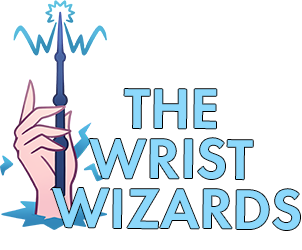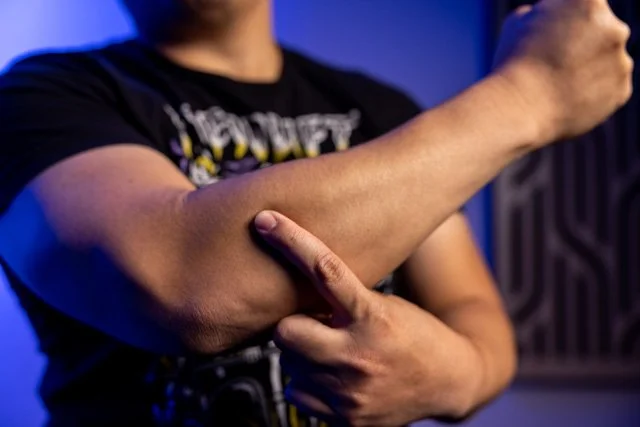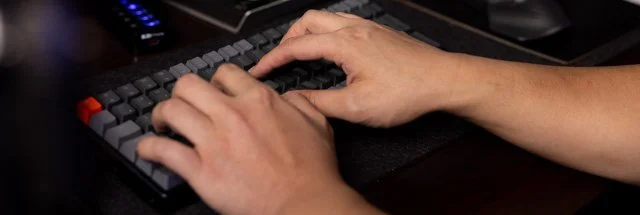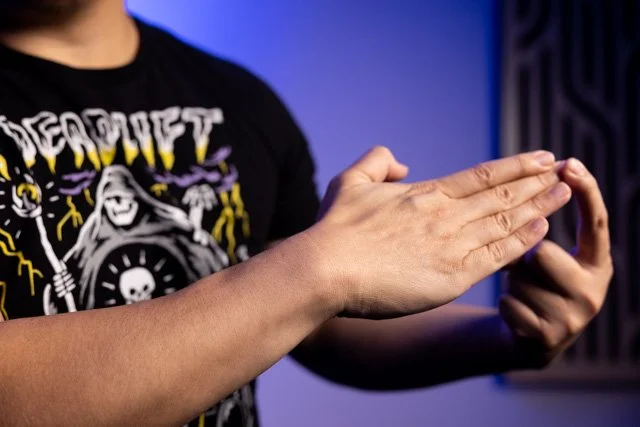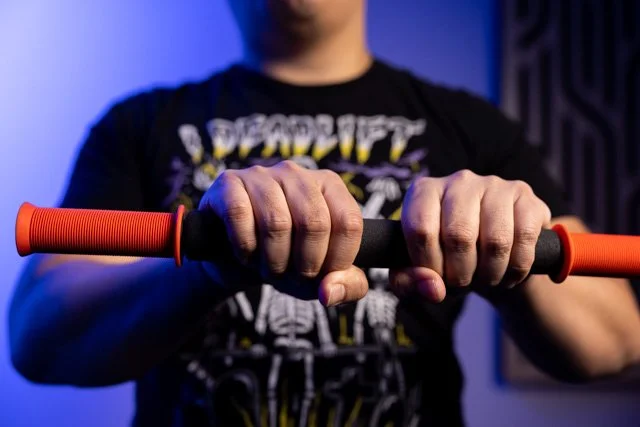How Do I Know If I Have Eldritch Elbow? (Tennis Elbow)
This blog discusses how to find out if you have tennis elbow.
Are you needing one on one help? Come talk to us here.
How To Find Out If You Have Tennis Elbow
Do you have pain in the outside of your elbow? Does it feels sinister? Is it a nagging ache that lingers at the edges of your attention?
Perhaps you have the dreaded eldritch (tennis) elbow.
Does it hurt right here?
It can be scary and confusing not knowing how to handle this type of pain. You scare yourself by asking questions like:
“When will this ever go away?
Will this ever get better? ”
In this article, we’ll talk about how people develop eldritch elbow and how to assess yourself for the injury.
What is Eldritch Elbow?
There are several muscles that help you “extend” or bring back your wrist and fingers. These extensor muscles all attach on a point on the elbow called the “lateral epicondyle”.
When these muscles are strained or overused without giving them proper time to recover…the tendons begins to change. The area around that insertion point begins to throb and become dysregulated which leads to pain with varying levels of intensity. It can go from an ache that comes and goes to a sharp throbbing or burning that doesn’t go away.
How Did I Get Eldritch Elbow?
One of the main contributors to this condition is frequent typing.
Eldritch elbow develops primarily from overuse. Any sort of activity that requires the following are at higher risk for developing this condition:
reaching
lifting
pushing/pulling
manipulating objects with unsupported arms
use of power tools
excessive typing or filing
While muscles that get used a lot tend to grow stronger, in this case, the tendon does not have enough time to heal or recover before it is strained again. This leads to the area becoming chronically painful.
Symptoms of Eldritch Elbow
Eldritch elbow is pain that occurs on the outside (lateral) side of the elbow. The pain is intensified by extending the wrist, gripping, or turning the wrist while doing things like turning a key or using a doorknob.
How to Test if You May Have Eldritch Elbow
Disclaimer: A full test should be performed by a trained physician or physiotherapist for proper evaluation.
The following are a few special tests you can try on yourself to see if you are suffering from this particular ailment.
Test #1: Resist the Wrist
This test is called Cozen’s Test. It is testing to see if your extensors are in pain when contracted.
Place the wrist in extension and hold it there.
Try to push the wrist down into flexion, but resist the motion.
A positive test is pain in the outside elbow.
Test #2:Resist the Finger
This is to test the extensor tendon that attaches to the middle finger.
Stick the middle finger out and hold it in that position.
Try to push the finger down into flexion, but resisted motion.
A positive test is pain in the back of forearm to the outside elbow.
Test #3: Weakened Grip
Grip hard and see if your painful side is able to grab the object less strongly than the other hand.
Grip an object like a ball or rolled up towel with both hands. Does your grip feel symmetrical?
A weakened grip along with pain on the outside elbow could mean you’ve been afflicted by the eldritch elbow.
What Can I Do About Eldritch Elbow?
The short answer is strengthen the tendon. The tendon complex is dysregulated due to overuse, and needs to be reshaped and re-formed. A 12 week program of eccentric wrist extension with progressive overload is the simplest (but sometimes difficult) way to do that. While it is treatable without surgery, in severe cases, a physician may recommend a cortisone injection or even surgery if the symptoms have lasted for six months or longer.
We are currently working on a treat-yourself course which will take you step by step through the process of recovery. When it’s done you can find it here.
Summary
Eldritch elbow is one of the most common injuries to occur in people or athletes who tend to use their hands or wrist a lot. While it can seem like it will never go away, it is treatable without the need of surgery. Strengthening combined with modification of how tasks are performed can lead to improved symptoms within a few weeks.
The Wrist Wizards are licensed doctors of physical therapy who specialize in treatment of the upper quarter: wrist, hands, elbows, shoulders and spine! We get you back to casting spells, swashbuckling or just doing what you love in a fun, structured and science based approach. The only magic here is how fast you’ll get better. Make an appointment to speak to one of us here!
